Let
f(x)=4x-1
and
g(x)=2x^2+3.
Then
(f+g)(2)
equals what?
What is 18?
Let f(x)=3x and g(x)=2x+4. Then (g(f(2)) equals what?
What is 16?
This function looks like a V.
What is the absolute value function?
What is up 5?
A function and it's inverse are symmetric across this line.
What is y=x?
On what interval is the function increasing?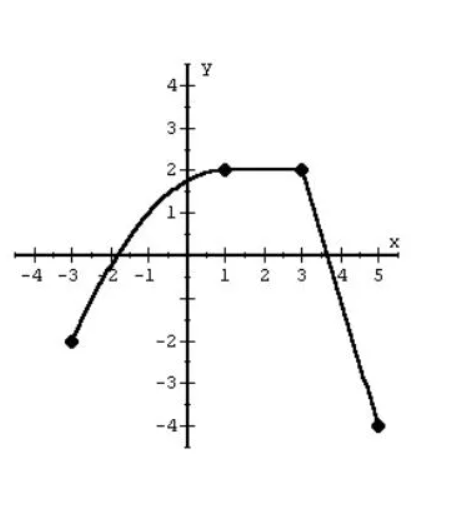
What is (-3, 1)?
Let f(x)=3x and g(x)=2x+4. Then (f o g)(1) equals what?
What is 18?
Let f(x)=3x and g(x)=2x+4. Then (f o g)(1) equals what?
What is 18
This function has a domain and range of [0,infinity)
y=sqrtx
What is reflection across the x-axis?
Are all odd functions one-to-one? If not, draw an example.
No. Examples will vary.
On what interval is the graph decreasing?
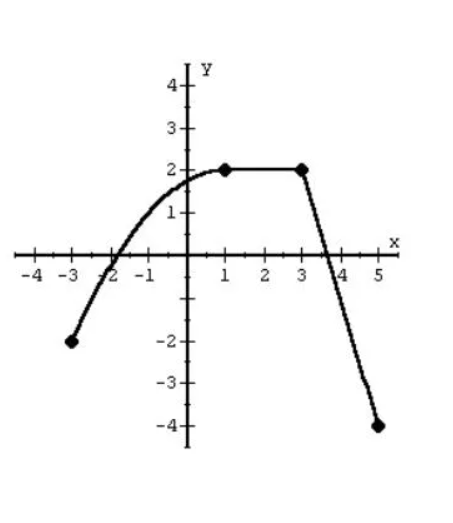
For the given coordinates,
{(0,5), (-2,7),(-2,-1)},
state the domain and range.
What is D:
D:{-2, 0)
R: {-7,1,5}
Let f(x)=4x-1 and g(x)=2x^2+3. Then f(1)-g(1) equals what?
What is -2?
Is f(x)=x^3+3x+2 even, odd, or neither?
What is neither?
If k(x)=x^3 , describe the transformations for j(x)=(-x)^3-0.5.
What is a reflection across the y-axis and translated down 0.5 units?
Algebraically (not graphically), how do you know two functions are inverses?
f(g(x))= x
AND
The domain of this function.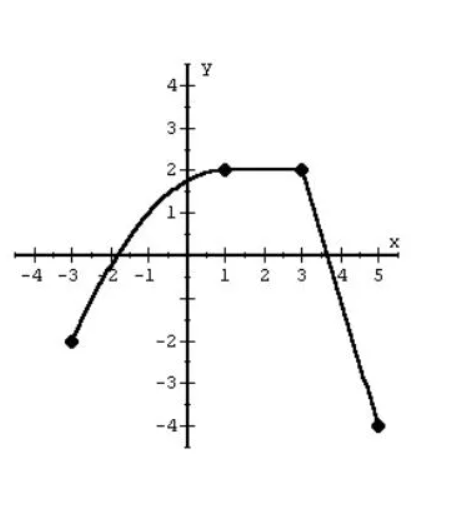
[-3,5]
If it's a function, the graph passes this.
What is the vertical line test.
Let f(x)=4x-2 and g(x)=2x. Then (g/f)(2) equals what?
What is
2/3?
If the parent function is a quadratic function, what is the domain and range?
What is domain (-infinity, infinity) and range [0, infinity)?
Let p(x)=|x|. Write an equation h(x) that has the following transformations: reflect across the x-axis and vertically expand by a factor of 6.
What is h(x)=-6|x|?
What is the inverse of
f(x)=2x^2+5
f^-1(x)=sqrt((x-5)/2
The range of this function.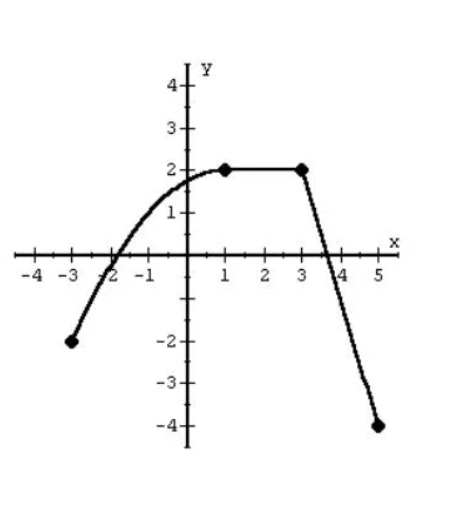
What is [-4, 2]?
If it's a one-to-one function, the graph passes this.
What is the horizontal line test?
Let f(x)=3x^2+2 and g(x)=2x+9. Then f(g(x)) equals this.
What is
12x2+108x+245?
Let f(x)=3x^2+2 and g(x)=2x. Then (f o g)(x) equals what?
What is 12x^2 + 2
This is a sketch of the y=x3 function.
What is
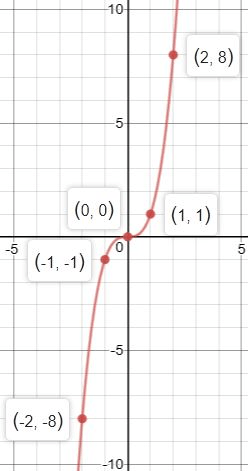
Let a(x)=x^3. Write a function b(x) that has the following transformations: vertically compress by a factor of 2, translate down 5 units, and reflect across the y-axis.
What is
b(x)=1/2(-x)^3-5?
Why aren't even functions one to one? Draw an example.
Because they don't pass the horizontal line test.
The coordinates of the relative maximum(s) and relative minimum(s).
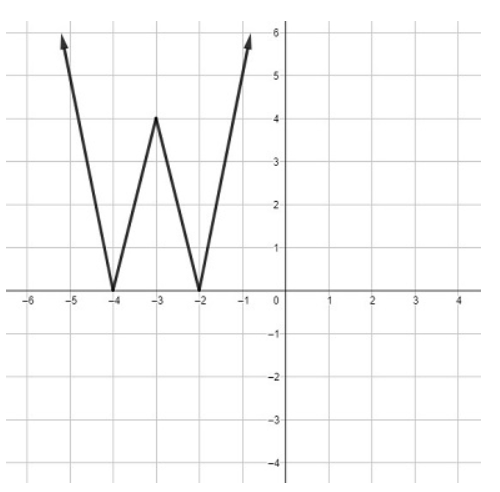
Max: (-3,4)
Min: (-4,0) and (-2,0)